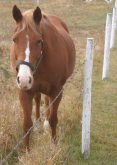Producers who swath graze their cattle in the winter need to have a contingency plan.
“Plan B is the option of what do you need to do when the cows are not able to break through the snow to get at the swath grazing or dormant foraging for grazing,” says Barry Yaremcio, Alberta Agriculture’s beef and forage specialist.
Even cattle that can continue to find food in the field will need nutrients added to their diet when the temperature plummets.
Yaremcio said -20 C is the point where cattle cannot produce enough heat from fermenting or digesting their feed to keep warm.
Read Also

Beef check-off collection system aligns across the country
A single and aligned check-off collection system based on where producers live makes the system equal said Chad Ross, Saskatchewan Cattle Association chair.
“They’re actually getting hungry.… Anything colder than that, you need to add extra grain to the ration or high energy feeds so that they’re getting more calories per day just to keep warm and prevent weight loss,” he said.
“Granted, as the temperature goes down they can eat more, but they’re never able to eat enough feed of hay or straw and lower energy density forages to meet the requirements. There always has to be some extra grain put in there.”
Yaremcio uses cattle rationing software called CowBytes, which is designed to match an animal’s energy requirements to different weather conditions.
“For example, at -20 C with a five km-h wind, you can get away feeding a 1,400 pound cow 28 lb. of hay and 7.5 lb. of straw. That will generally take care of their requirements. But at the same temperature and a 30 km-h wind, they need 30 lb. of hay and eight lb. of grain just to maintain body condition.… The rule of thumb that I use is if your noon temperature is -30 C with minimal wind, then you need to add an additional two lb. of grain to your existing ration just to maintain the animal. So if it’s -40, you have to add four lb. of grain.”
Glen Smith is well into his Plan B this year, with Plan C on standby. He said every producer’s system is different and what works for one doesn’t necessarily work for another.
“There is no recipe.”
Crusting snow has reduced the amount of grazing that Smith’s commercial herd of Angus based cows can do on his farm near Vermilion, Alta. The cows are now getting by on feeding bales, straw and pellets.
Smith said this winter’s high humidity and temperature fluctuations have been challenging for many cattle producers.
“There’s always a plan,” he said.
“I learned quite a number of years ago that you have to have flexibility in the plan. It means having bales in the feed yard as well.”
He said the lower hay quality this year has compounded the feeding challenges.
“Lots of us are feeding two-year-old hay, even three-year-old hay in some cases,” he said.
“We recognize it doesn’t pack the forage value or feed value of younger forage, but it’s one of those things that you have to deal with what you’ve got and if you need to throw in a little extra supplement here or there to make up the difference, that’s what you do.”
Mark vanHaastert, who runs a 550 commercial Angus-Simmental cross operation near Bjorkdale, Sask., said having extra feed as insurance never hurts.
“If you don’t have that plan in place, that’s where you’re going to get caught…. I can see where a person can get into trouble on a year like this,” he said. “There’s always going to be a thin one here or there. You want to look at the overall condition of the cow herd from A to Z.”
Weight loss in pregnant cows is of particular concern and needs to be monitored more closely 30 to 60 days before calving. Yaremcio said three things could happen if an animal is short of energy and protein before calving.
“Their ability to produce colostrum, both quality and quantity, is going to go down so the immunity passed onto the calf is reduced,” he said.
“So at calving time, they may have a whole bunch of sick calves. The second thing is the total amount of produced milk will be lower throughout the entire lactation.
“The third thing to happen when you have a cow that’s losing weight prior to calving is that she’ll continue to lose weight pretty well up to the time the bulls are put out. Their conception weight is going to drop by 30 to 40 percent.
“You could have a calf crop that’s only two-thirds as big this year as it was last year because these cows are skinny. That’s a huge loss.”
He said cows’ nutritional requirements increase by 25 percent at calving because they’re producing milk and repairing their reproductive systems so that they can conceive 90 days later.
Yaremcio said it’s beneficial for producers to get a second educated opinion on their animals’ condition.
VanHaastert agreed.
“Work with your livestock guys, the ones that are selling your feeds, and use your agrologist,” he said.
“Don’t just go by what you think is right. There’s free advice out there.”
Yaremcio said the most important thing is for producers to watch their cows to see what they’re doing.
“If they’re having troubles, or if there is difficulties of them keeping their weight on, you’re going to have to change something and make it better for them.”

















